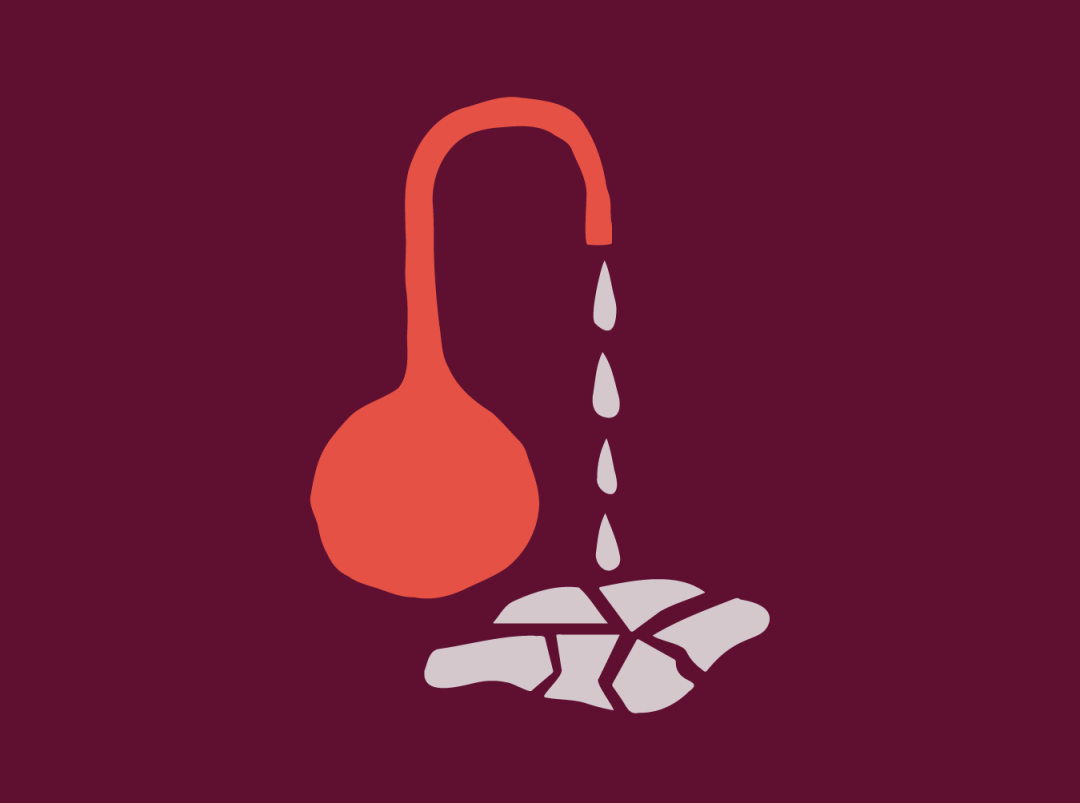#explainer
6 Ways to Deal with Postpartum Incontinence
health
·5 min read

by Team Thinx | 04/14/2023
Are you a new parent dealing with postpartum incontinence? You're not alone. Many people experience urinary incontinence after giving birth, and it can be hard to know how to manage it. Fortunately, there are exercises for postpartum urinary incontinence and other strategies you can use to help reduce your symptoms. Let's break down 6 ways to deal with postpartum incontinence, so you can regain control of your bladder.
1. kegel exercises
Kegel exercises are a great way to help with postpartum incontinence, as well as other pelvic floor issues such as pelvic organ prolapse. Kegel exercises involve engaging and strengthening the pelvic floor muscles. These pelvic muscles act like a hammock and support the bladder, uterus, rectum, and other pelvic organs. When done correctly, kegel exercises can help strengthen the pelvic floor muscles and improve bladder control and stress urinary incontinence. According to a systematic review and meta-analysis published in the International Urogynecology Journal in 2018, pelvic floor muscle training (PFMT), including Kegel exercises, significantly reduced postpartum urinary incontinence.
Don’t know how to exercise your pelvic floor muscles? To perform a kegel exercise, squeeze your pelvic floor muscles (as if you are trying to stop the flow of urine) and hold for 10 seconds before relaxing. This should be repeated 10 times, three times per day, for the best results.
Kegel exercises can also be combined with physical activity or physical therapy for even better results. With regular practice and dedication, you can strengthen your pelvic floor muscles and reduce symptoms of postpartum incontinence and stress incontinence.
2. absorbent products
If you’re dealing with postpartum incontinence, absorbent products can be an incredibly helpful tool in managing your symptoms. Whether you’re experiencing stress urinary incontinence, urge incontinence, or any other form of urinary incontinence, these products can provide extra protection when you need it.
Common absorbent products include pads, pantyliners, and reusable underwear like Thinx for All Leaks, which are specially designed to wick away moisture and protect your clothes from bladder leakage. If you’ve recently had a baby, or have a pelvic floor issue, absorbent products can help you manage your symptoms until you can get back to doing physical activity and pelvic floor exercises.
When it comes to absorbent products, the most important thing is finding the right fit for your needs. Several options are available on the market, so it’s best to talk to your doctor or physical therapist to determine what type would be the best incontinence product for you. It’s also important to make sure that whatever product you choose provides enough protection for your needs and is comfortable for you to wear.
While absorbent products may not be able to address the underlying causes of postpartum incontinence, such as diastasis recti, pelvic organ prolapse, or weakened pelvic floor muscles, they can help you feel more comfortable and secure while you work on strengthening your pelvic floor muscles through kegel exercises and other forms of physical therapy.
3. lifestyle changes
When it comes to postpartum incontinence, making small lifestyle changes can have a big impact. Eating a balanced diet with plenty of fruits, vegetables, and whole grains can help keep your pelvic floor muscles strong, while avoiding processed foods, sugar, and saturated fats can reduce the risk of urinary incontinence. Additionally, drinking lots of water can help keep your bladder full and reduce the risk of stress incontinence. Lastly, if you smoke, it's important to quit as smoking can cause pelvic floor issues, as well as other complications related to postpartum incontinence.
4. bladder training
One of the most effective methods for managing postpartum incontinence is bladder training. Bladder training helps improve bladder control and prevent or reduce incontinence episodes by retraining the pelvic floor muscles.
The goal of bladder training is to increase the time interval between each time you urinate. To do this, you must first become aware of your body’s signals that indicate when it is time to go to the bathroom. Once you recognize these signs and know how much liquid your bladder can hold, you can work on slowly increasing the time intervals between bathroom visits.
To start bladder training, empty your bladder at regular intervals, such as every two to three hours. Increase this time gradually over the next few days. During this time, keep track of how much liquid you are drinking, how often you are urinating, and how much urine is being released each time. This will help you get an idea of your body’s patterns and needs.
If you’re having difficulty with bladder training, or if you’re dealing with a more complex pelvic floor issue such as diastasis recti or postpartum urinary incontinence, it is best to seek professional advice from a physical therapist or healthcare provider. They can provide customized treatment plans and guidance for managing postpartum incontinence.
5. medications & devices
Medications and devices can be used to help relax the bladder and control urine flow. For example, a pessary is a device that can be placed in the vagina to support the bladder, rectum, and other pelvic organs, helping the bladder fully empty.
In some cases, a bladder sling may also be surgically inserted to treat incontinence symptoms. It's important to remember that protective incontinence products, such as pads or underwear briefs, can help you continue to enjoy bonding with your baby.
6. seek out healthcare providers
It is important to speak with a healthcare professional if you have symptoms of postpartum incontinence. A healthcare provider can help develop an effective treatment plan that is right for you. This plan may include pelvic floor exercises, lifestyle changes, medications, bladder control training, and other physical activities.
Your healthcare provider can also help you determine the best way to manage pelvic floor issues or pelvic organ prolapse. In addition, they can advise you on the safest way to incorporate physical activity into your routine with diastasis recti. By speaking with your healthcare provider, you can work together to find the best strategy to improve your postpartum urinary incontinence and stress urinary incontinence.
managing incontinence with baby
Having a baby around can make managing postpartum incontinence challenging. However, it doesn't have to be a source of stress! Here are some tips on how to manage postpartum incontinence with a baby.
virtual pelvic floor trainer
If you don’t have the time or resources for traditional physical therapy, a Virtual Pelvic Floor Trainer is an online exercise training program designed to help strengthen your pelvic floor muscles. The program will provide you with tailored exercises and guidance to help you strengthen your pelvic floor and improve your bladder control.
exercises with baby
As an added bonus, you can incorporate your baby into your routine! Try doing kegel exercises while you’re feeding them or rocking them to sleep. This can help remind you to engage your pelvic floor muscles, and can also help make the exercises more enjoyable.
join a support group
It can be helpful to talk to other moms and parents who are also dealing with postpartum urinary incontinence. Joining a support group or even just having a few close friends who understand can help you stay motivated and feel less alone in your struggles.
No matter what, it’s important to remember that postpartum urinary incontinence is very common and very treatable. According to the American College of Obstetricians and Gynecologists (ACOG), postpartum urinary incontinence affects approximately 25% to 45% of women after vaginal delivery and up to 10% after cesarean delivery. This number is higher for postpartum women who had a cesarean section, but even women who had a vaginal birth are at risk.
Don’t be afraid to reach out for help from your healthcare provider or from others who understand what you’re going through. With the right treatment plan and a bit of patience, you can regain control of your bladder and be on your way to a healthier, happier postpartum experience!
how long does it last?
Postpartum incontinence typically lasts a few weeks, but can last up to 6 months or longer. The duration of this condition depends on the severity of the pelvic floor issue and the type of physical activity or physical therapy used to treat it.
Postpartum urinary incontinence, or stress urinary incontinence, is caused by weak pelvic floor muscles, which can result from childbirth, pelvic organ prolapse, or diastasis recti. With proper care, such as pelvic floor muscle training exercises (Kegel exercises) and other lifestyle changes, most postpartum women can regain control over their bladder.
what causes postpartum incontinence?
Postpartum incontinence can be caused by a variety of factors including weakened pelvic floor muscles, pelvic organ prolapse, and physical activity. Pelvic floor muscles are located between your legs and help control bladder and bowel movements as well as support your abdominal organs.
After childbirth, the muscles can become weakened or damaged, leading to urinary incontinence, stress incontinence, or other forms of postpartum urinary incontinence.
Pelvic organ prolapse occurs when weakened pelvic floor muscles can no longer support the internal organs. This can cause stress incontinence after childbirth, urge incontinence, and overflow incontinence. Physical activity can also exacerbate symptoms of postpartum incontinence as the strain on the pelvic muscles increases with physical activity.
At Thinx, we strive to provide our readers with the most up-to-date, objective, and research-based information. Our content is crafted by experienced contributors who ground their work in research and data. Articles contain trusted third-party sources that are either directly linked within the text or listed at the bottom to lead readers to the original source.
sources:
American College of Obstetricians and Gynecologists. (2019). ACOG Committee Opinion No. 777: Obstetric Analgesia and Anesthesia. Obstetrics & Gynecology, 133(2), e208-e225. doi: 10.1097/AOG.0000000000003081.
Dumoulin, C., Cacciari, L. P., Hay-Smith, E. J., & Habée-Séguin, G. M. (2018). Pelvic floor muscle training versus no treatment, or inactive control treatments, for urinary incontinence in women. A Cochrane systematic review abridged republication. International Urogynecology Journal, 29(6), 755-761. doi: 10.1007/s00192-018-3609-9.
by Team Thinx


